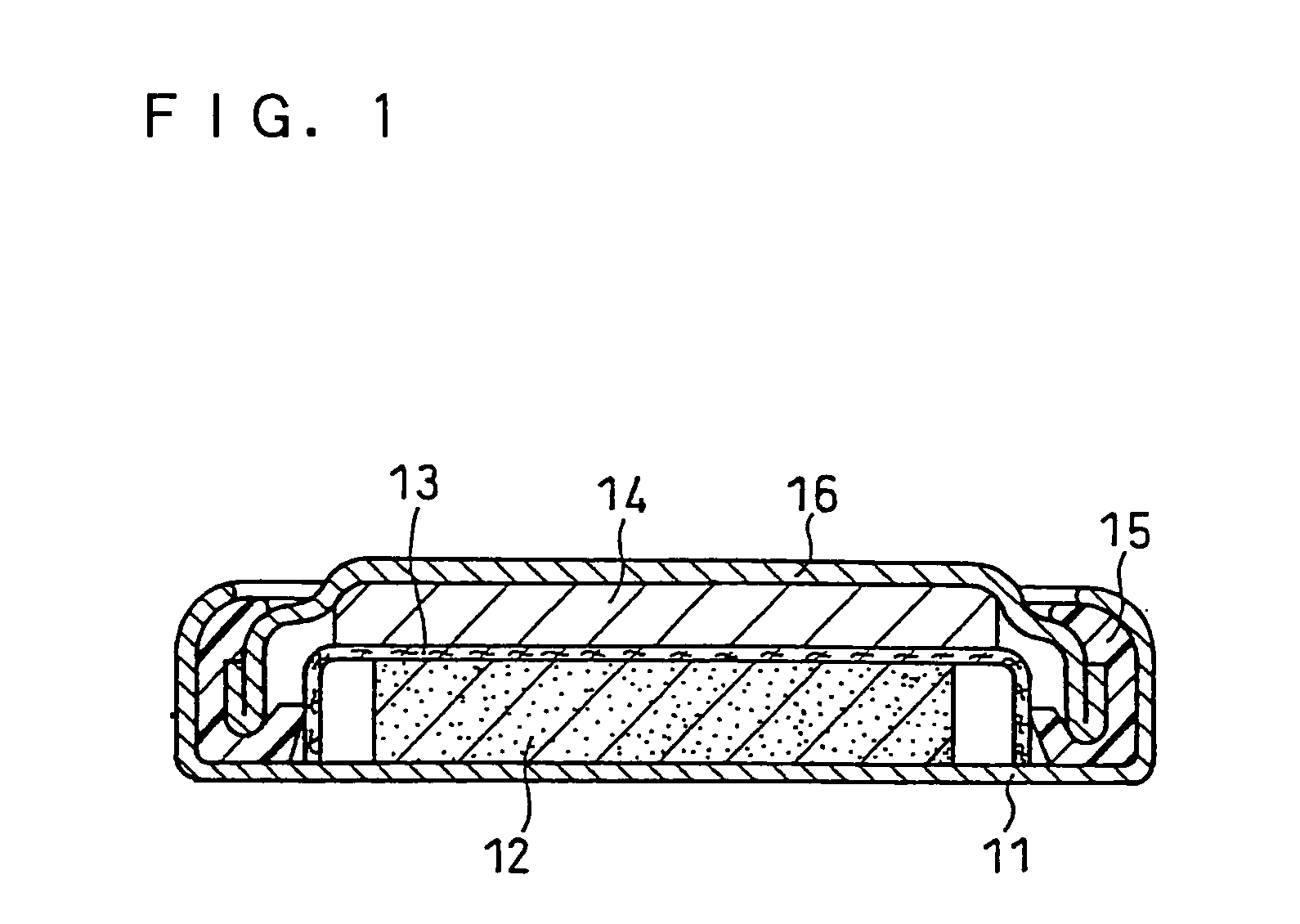Negative electrode for non-aqueous electrolyte secondary battery, producing method therefor, and non-aqueous electrolyte secondary battery
a secondary battery and negative electrode technology, applied in the direction of non-aqueous electrolyte accumulator electrodes, cell components, electrical equipment, etc., can solve the problems of shortened cycle life, prone to cracking and micronization of si particles, and reduced capacity, etc., to achieve excellent charge and discharge cycle characteristics, excellent electron conductivity, excellent binding ability and heat resistan
- Summary
- Abstract
- Description
- Claims
- Application Information
AI Technical Summary
Benefits of technology
Problems solved by technology
Method used
Image
Examples
example 1
(1) Preparation of Negative Electrode Active Material
[0066] A Ti powder (manufactured by Kojundo Chemical Lab. Co., Ltd., 99.99% purity, and particle size of below 20 μm) and a Si powder (manufactured by Kanto Chemical Co., Inc., 99.999% purity, and particle size of below 20 μm) were mixed in a weight ratio of 32.2:67.8 so that the proportion of the Si phase, i.e., the phase A in the negative electrode active material particles, is 30 wt %.
[0067] The mixed powder was placed in a vibration mill container, and further stainless steel balls (diameter of 2 cm) were placed so that the balls occupied 70 volume % of the container capacity. After vaccuming the inside of the container, the inside of the container was replaced with Ar (manufactured by Nippon Sanso Corporation, and 99.999% purity) until the pressure of the inside of the container becomes 1 atmosphere. Afterwards, mechanical alloying was carried out for 60 hours while applying a vibration of 60 Hz, to obtain a Ti—Si alloy.
[...
examples 2 to 5
[0092] In these Examples, the heating temperature of the negative electrode pellet containing polyamic acid as a precursor of polyimide, was examined in the case where polyimide and polyacrylic acid are used for the negative electrode binder.
[0093] Coin batteries were made in the same manner as Example 1, except that the heating temperature of the negative electrode pellet was changed to the temperatures shown in Table 2, and then evaluated. The evaluation results are shown in Table 2 along with the results for the batteries of Example 1.
TABLE 2NegativeElectrodeLowPelletTemperatureCycleHeatingInitialCapacityCapacityTemperaturePolyacrylicImidizationCapacityRetentionRetention(° C.)AcidRate (%)(mAh)Rate (%)Rate (%)Ex. 2150Remained206.58584Ex. 3200Remained806.58590Ex. 1250Remained986.58394Ex. 4300Remained1006.58094Ex. 5400Mostly1006.03093Decomposed
[0094] Since the negative electrode of Example 2 in which the heating temperature of the negative electrode pellet was 150° C. showed the ...
examples 6 to 10
[0098] In these Examples, the binder material (polyamic acid and polyacrylic acid) content in the negative electrode mixture was examined for the case when polyimide and polyacrylic acid were used for the binder in preparing a negative electrode.
[0099] Coin batteries were made in the same manner as Example 1, except that the binder material content per 100 parts by weight of the negative electrode active material in the negative electrode mixture was changed variously as shown in Table 3, without changing the mixing ratio of polyamic acid and polyacrylic acid in the binder material, and then evaluated.
[0100] The evaluation results are shown in Table 3 along with the evaluation results of Example 1.
TABLE 3Binder Material ContentinNegative ElectrodeInitialCycle CapacityMixtureCapacityRetention Rate(parts by weight)(mAh)(%)Ex. 60.26.586Ex. 70.56.593Ex. 85.06.594Ex. 1106.594Ex. 9306.494Ex. 10406.094
[0101] In the batteries of Example 6, in which the binder material content in the neg...
PUM
| Property | Measurement | Unit |
|---|---|---|
| temperature | aaaaa | aaaaa |
| temperature | aaaaa | aaaaa |
| melting point | aaaaa | aaaaa |
Abstract
Description
Claims
Application Information
 Login to View More
Login to View More - R&D
- Intellectual Property
- Life Sciences
- Materials
- Tech Scout
- Unparalleled Data Quality
- Higher Quality Content
- 60% Fewer Hallucinations
Browse by: Latest US Patents, China's latest patents, Technical Efficacy Thesaurus, Application Domain, Technology Topic, Popular Technical Reports.
© 2025 PatSnap. All rights reserved.Legal|Privacy policy|Modern Slavery Act Transparency Statement|Sitemap|About US| Contact US: help@patsnap.com


